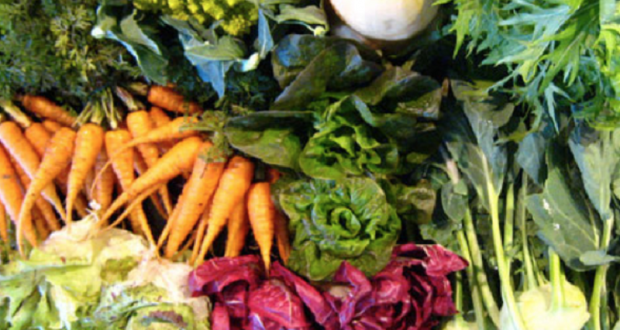By Bob Labozetta (UC Master Gardener, Mariposa)
It’s 90℉+ outside. Yep, time to prepare for your winter veggie garden. WHAT?
Winter veggie choices include beets, Brussels sprouts, cabbage, carrots, chard, garlic, kohlrabi, leeks, lettuce, onions/shallots, parsnips, peas, potatoes, radishes, rhubarb, rutabaga, spinach, turnip, and other leafy greens such as bok choy and kale.
The above veggies can be direct seeded into a prepared garden bed, and many of them can be purchased as seedlings in nurseries. Make a plan and draw up a list of the cool season veggies you like and grow well in your area or microclimate.
Next, determine when each veggie needs to be planted and when you are going to harvest your warm season crops to leave space for the winter crops. Continuing to plant beans, corn, cucumbers, and squash during the warm months may not leave you room for your winter selections.
Although tomatoes will produce up to the first frost date, late tomatoes aren’t as tasty as earlier pickings and you may be better off just doing a final harvest in late September or early October for the sauce pot. Then pull them up and plant peas, for example, in that space. You can use the same supports and add mesh for the peas to grow up.
Cool season veggies need some warm weather to get roots established and enough above-ground growth to handle really cool weather. Knowing when your first frost date is and when to direct sow (in most cases) in relation to that date is critical.
Follow these simple steps…
Step 1: Find your first fall frost date. Mariposa County contains several hardiness zones and microclimates. There are various resources to guide you in finding the first frost date in your garden. Try www.plantmaps.com and look for the interactive plant hardiness zone maps.
Step 2: Determine when to direct sow and set out transplants. Use fall planting calculators such as Seeds for Generations, Grow Organic, or Johnny Seed fall planting calendars.
Step 3 (optional): Use a garden planner. Mother Earth News offers a comprehensive garden planner that helps you find frost dates (first and last), design garden beds, and compiles a chart showing how many of each plant you need to buy or raise from seed, the correct spacing and recommended planting dates for your area. Print both the plan and plant list for reference.
————————–
UC Master Gardeners of Mariposa County serve Mariposa County, including Coulterville, Greeley Hill and Don Pedro. For gardening and event information, call us at 209-966-7078 or email mgmariposa@ucdavis.edu.
Find us online at http://cemariopsa.ucanr.edu/Master_Gardener, on Facebook (UC Master Gardeners of Mariposa County), and on YouTube at “UCCE Mariposa”. Listen to us on KRYZ 98.5 FM radio Wednesdays at 2 p.m. and Saturdays at 5 p.m.




